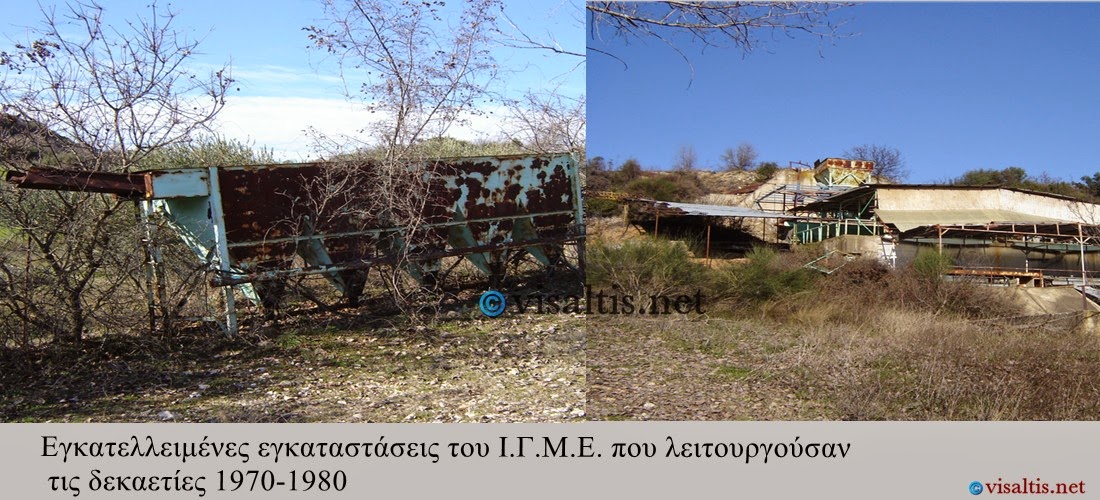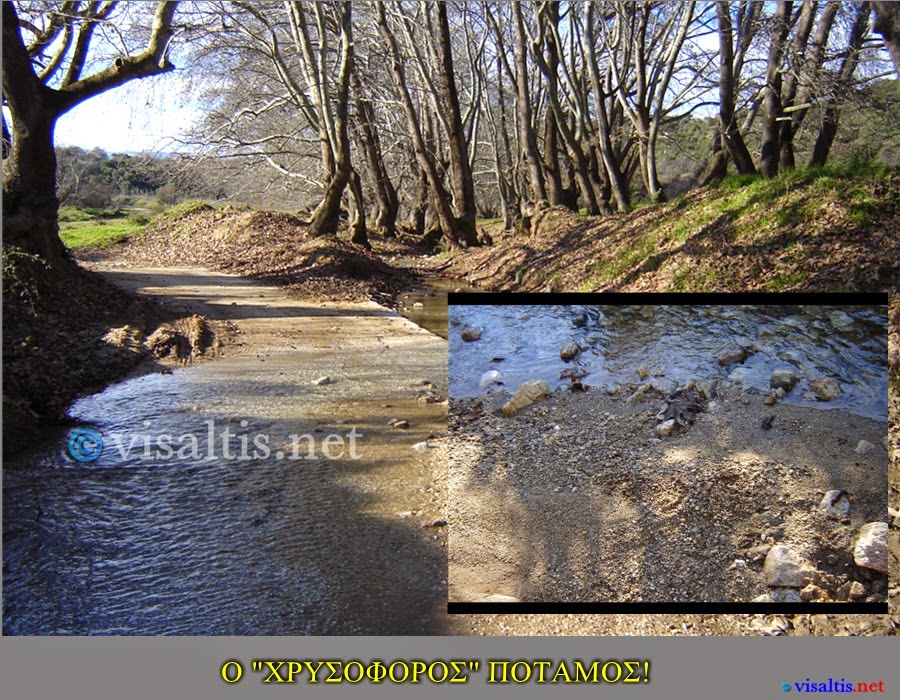Malamatas, It was he who was collecting gold from the streams of the region: In the South of the Sarpoybno River Terpni, the Language in Nigrita, and in the West of the Terpni River. The gold collection in Sarpoybno River survived from antiquity to our days. There are ancient references to certifi ed production of gold proschwsigenoys in the South of Terpnis1, but sygchrones2, as well as oral testimony on the same subject.
The narrators in nigrita made nominal references to collectors gold from the Language at the beginning of the last century, in malamatades. But in Terpni the generation of our parents remembered the last malamata in Sarpoybno River, who was collecting gold shortly before the middle of the last century. The narrators were, also, information about the technique followed by the last malamatades of Terpni. Some River sand xeplenan in shallow metal utensils and gold nuggets, because of that it was heavier than the grains of sand, stayed last in their utensils. Others were shallow wooden tubs which were at the bottom of the notches, where for the same reason the nuggets of gold katakathontan.
Is, though, known since antiquity, and another gold collection method from running waters of rivers. Listed with brief, as was recovered from the Internet. Reportedly left the geographer Strabwn3, "the Golden Plains rivers polarizability with sheep hides (hides, milwtes, Apples = sheep). The gold nuggets that bring water to wool tentwmenis milwtis sticking on the bottom of the river. The milwti then be hung from a tree to dry and then ached, so with the washing of ashes to remain solid gold. So, When Strabo always, He was born the legend of the Golden Fleece ".
In the years of our own generation were no longer "gold-diggers" or "metal hunters». Issue, though, came to life again when started from the Institute of Geological Studies Greece (IGME) inquiries for gold in Paliokastro4 area. Surveys lasted five years, from the 1976 up and the 1980. But the continued activity of i. g. m. e. in the area and after the 1980, having as their object the research of gold crumbs. The Igme, estab- enrichment unit under testise of the Holy Handkerchief, in which spiked samples from many regions of Macedonia and Thrace.
The malamatades
The Nigrita made at auction the right to collect gold from the river Language. As bidders reported Constantine Royntos and George Ioannou-Gioybantsios, who love to others in- medial to malamateyoyn, as John Koytharis from Nigrita. For Terpni we know that during the interwar period malamateyan many Terpniwtes and some of them are listed in p. e. Malamateyan on the river of the village, in the torrent that is next to the village, but mainly in Sarpoybno River, near Paliokastro, where, When the narrators, the malamatades had better odds.
He has also heard on old narratives, that and someone unknown stranger did held the same job next to the chapel of the Holy Handkerchief. They were all the last malamatades in our country. Malamatades of Terpni, from the tables of professionals: Dimitrios Kanarakis, Panagiotis Ev. Matsias, George Michaleas, Malamas Felias.
From the new book by Nicholas l.. Pashaloudis ' Traditional occupations in Nigrita and Terpni». MALAMATAS-NEWSPAPER “THE TERPNI”
©www.visaltis.net
* 1 (a)) N. Usa. 5 [The Terpni, references in yesterday and today], s.. 218. In Paliokastro, discovered "inscription that commemorates his crumbs of gold agoranomiko control, that co- It was called from the nearby river».
(b)) N. Usa. 5, s.. 218. In note 167 refers: «…also known as, that gold of Visaltias, along with that of Pageos, they financed the campaign of Alexander the great ". 2 N. Usa. 5, s.. 218.
"We know that dienergoymenai is also ergasiai eferon unto light different kinds of metals and pre-eminent clean gold...", then ".".forces by the year oikonomikon 1923-24 Community prostheton forologian operating profit of the perifereia Tserpistis mining community with forologikon pososton ten centimeters on the public tax ".











